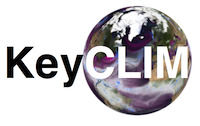The supereruption of Los Chocoyos (14.6∘ N, 91.2∘ W) in Guatemala ∼84 kyr ago was one of the largest volcanic events of the past 100 000 years. Recent petrologic data show that the eruption released very large amounts of climate-relevant sulfur and ozone-destroying chlorine and bromine gases (523±94 Mt sulfur, 1200±156 Mt chlorine, and 2±0.46 Mt bromine). Using the Earth system model (ESM) of the Community Earth System Model version 2 (CESM2) coupled with the Whole Atmosphere Community Climate Model version 6 (WACCM6), we simulated the impacts of the sulfur- and halogen-rich Los Chocoyos eruption on the preindustrial Earth system.
Our simulations show that elevated sulfate burden and aerosol optical depth (AOD) persists for 5 years in the model, while the volcanic halogens stay elevated for nearly 15 years. As a consequence, the eruption leads to a collapse of the ozone layer with global mean column ozone values dropping to 50 DU (80 % decrease) and leading to a 550 % increase in surface UV over the first 5 years, with potential impacts on the biosphere. The volcanic eruption shows an asymmetric-hemispheric response with enhanced aerosol, ozone, UV, and climate signals over the Northern Hemisphere. Surface climate is impacted globally due to peak AOD of >6, which leads to a maximum surface cooling of >6 K, precipitation and terrestrial net primary production decrease of >25 %, and sea ice area increases of 40 % in the first 3 years. Locally, a wetting (>100 %) and strong increase in net primary production (NPP) (>700 %) over northern Africa is simulated in the first 5 years and related to a southward shift of the Intertropical Convergence Zone (ITCZ) to the southern tropics. The ocean responds with pronounced El Niño conditions in the first 3 years that shift to the southern tropics and are coherent with the ITCZ change.
Recovery to pre-eruption ozone levels and climate takes 15 years and 30 years, respectively. The long-lasting surface cooling is sustained by an immediate increase in the Arctic sea ice area, followed by a decrease in poleward ocean heat transport at 60∘ N which lasts up to 20 years.
In contrast, when simulating Los Chocoyos conventionally by including sulfur and neglecting halogens, we simulate a larger sulfate burden and AOD, more pronounced surface climate changes, and an increase in column ozone. By comparing our aerosol chemistry ESM results to other supereruption simulations with aerosol climate models, we find a higher surface climate impact per injected sulfur amount than previous studies for our different sets of model experiments, since the CESM2(WACCM6) creates smaller aerosols with a longer lifetime, partly due to the interactive aerosol chemistry. As the model uncertainties for the climate response to supereruptions are very large, observational evidence from paleo archives and a coordinated model intercomparison would help to improve our understanding of the climate and environment response.




